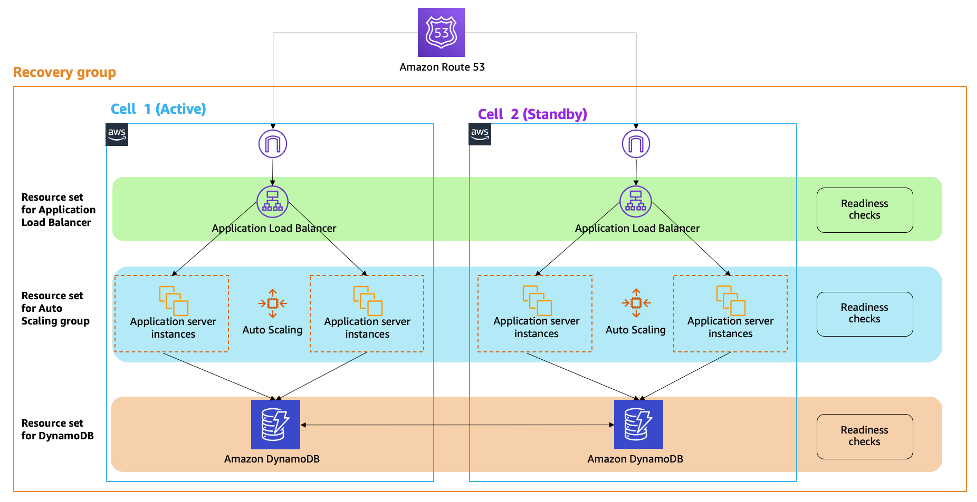}
}
```
## Requirements
| Name | Version |
|------|---------|
| [terraform](#requirement\_terraform) | >= 0.15.0 |
| [aws](#requirement\_aws) | >= 3.68 |
## Providers
| Name | Version |
|------|---------|
| [aws.ap-northeast-1](#provider\_aws.ap-northeast-1) | >= 3.68 |
| [aws.ap-northeast-2](#provider\_aws.ap-northeast-2) | >= 3.68 |
| [aws.ap-northeast-3](#provider\_aws.ap-northeast-3) | >= 3.68 |
| [aws.ap-south-1](#provider\_aws.ap-south-1) | >= 3.68 |
| [aws.ap-southeast-1](#provider\_aws.ap-southeast-1) | >= 3.68 |
| [aws.ap-southeast-2](#provider\_aws.ap-southeast-2) | >= 3.68 |
| [aws.ca-central-1](#provider\_aws.ca-central-1) | >= 3.68 |
| [aws.eu-central-1](#provider\_aws.eu-central-1) | >= 3.68 |
| [aws.eu-north-1](#provider\_aws.eu-north-1) | >= 3.68 |
| [aws.eu-west-1](#provider\_aws.eu-west-1) | >= 3.68 |
| [aws.eu-west-2](#provider\_aws.eu-west-2) | >= 3.68 |
| [aws.eu-west-3](#provider\_aws.eu-west-3) | >= 3.68 |
| [aws.sa-east-1](#provider\_aws.sa-east-1) | >= 3.68 |
| [aws.us-east-1](#provider\_aws.us-east-1) | >= 3.68 |
| [aws.us-east-2](#provider\_aws.us-east-2) | >= 3.68 |
| [aws.us-west-1](#provider\_aws.us-west-1) | >= 3.68 |
| [aws.us-west-2](#provider\_aws.us-west-2) | >= 3.68 |
## Modules
| Name | Source | Version |
|------|--------|---------|
| [recovery\_cluster](#module\_recovery\_cluster) | ./modules/recovery_cluster | n/a |
| [recovery\_group](#module\_recovery\_group) | ./modules/readiness_recovery_group | n/a |
## Resources
| Name | Type |
|------|------|
| [aws_lb.ap_northeast_1](https://registry.terraform.io/providers/hashicorp/aws/latest/docs/data-sources/lb) | data source |
| [aws_lb.ap_northeast_2](https://registry.terraform.io/providers/hashicorp/aws/latest/docs/data-sources/lb) | data source |
| [aws_lb.ap_northeast_3](https://registry.terraform.io/providers/hashicorp/aws/latest/docs/data-sources/lb) | data source |
| [aws_lb.ap_south_1](https://registry.terraform.io/providers/hashicorp/aws/latest/docs/data-sources/lb) | data source |
| [aws_lb.ap_southeast_1](https://registry.terraform.io/providers/hashicorp/aws/latest/docs/data-sources/lb) | data source |
| [aws_lb.ap_southeast_2](https://registry.terraform.io/providers/hashicorp/aws/latest/docs/data-sources/lb) | data source |
| [aws_lb.ca_central_1](https://registry.terraform.io/providers/hashicorp/aws/latest/docs/data-sources/lb) | data source |
| [aws_lb.eu_central_1](https://registry.terraform.io/providers/hashicorp/aws/latest/docs/data-sources/lb) | data source |
| [aws_lb.eu_north_1](https://registry.terraform.io/providers/hashicorp/aws/latest/docs/data-sources/lb) | data source |
| [aws_lb.eu_west_1](https://registry.terraform.io/providers/hashicorp/aws/latest/docs/data-sources/lb) | data source |
| [aws_lb.eu_west_2](https://registry.terraform.io/providers/hashicorp/aws/latest/docs/data-sources/lb) | data source |
| [aws_lb.eu_west_3](https://registry.terraform.io/providers/hashicorp/aws/latest/docs/data-sources/lb) | data source |
| [aws_lb.sa_east_1](https://registry.terraform.io/providers/hashicorp/aws/latest/docs/data-sources/lb) | data source |
| [aws_lb.us_east_1](https://registry.terraform.io/providers/hashicorp/aws/latest/docs/data-sources/lb) | data source |
| [aws_lb.us_east_2](https://registry.terraform.io/providers/hashicorp/aws/latest/docs/data-sources/lb) | data source |
| [aws_lb.us_west_1](https://registry.terraform.io/providers/hashicorp/aws/latest/docs/data-sources/lb) | data source |
| [aws_lb.us_west_2](https://registry.terraform.io/providers/hashicorp/aws/latest/docs/data-sources/lb) | data source |
## Inputs
| Name | Description | Type | Default | Required |
|------|-------------|------|---------|:--------:|
| [cells\_definition](#input\_cells\_definition) | Nested map where the key is a region you want to enable and keys referring to resource arns to enable. Services enabled are defined in `var.resource_type_name`. For examples, see the variables.tf file"
/*
cells\_definition = {
us-west-2 = {
elasticloadbalancing = "arn:aws:elasticloadbalancing:us-west-2:<>:loadbalancer/app/<>"
autoscaling = "arn:aws:autoscaling:us-west-2:<>:autoScalingGroup:*:autoScalingGroupName/<>
}
}
*/ | `map(map(string))` | n/a | yes |
| [name](#input\_name) | Name to prefix resources. | `string` | n/a | yes |
| [create\_recovery\_cluster](#input\_create\_recovery\_cluster) | Create the Routing Control Cluster and associated resources. | `bool` | `false` | no |
| [hosted\_zone](#input\_hosted\_zone) | Info about the hosted zone. If the `name` or `zone_id` is not passed, a search will be performed using the values provided. Leave null to not create Route53 Alias records (required for LB functionality). | object({
name = optional(string)
private_zone = optional(bool)
vpc_id = optional(string)
tags = optional(map(string))
zone_id = optional(string)
}) | {
"name": null,
"zone_id": null
} | no |
| [primary\_cell\_region](#input\_primary\_cell\_region) | (Optional) Region name of which Cell to make Route53 Primary. Defaults to default provider region if not set. | `string` | `null` | no |
| [resource\_type\_name](#input\_resource\_type\_name) | list of all service types you can pass and their associated Resource Set Type. | `map(string)` | {
"apigateway": "AWS::ApiGatewayV2::Api",
"autoscaling": "AWS::AutoScaling::AutoScalingGroup",
"cloudwatch": "AWS::CloudWatch::Alarm",
"dynamodb": "AWS::DynamoDB::Table",
"ec2-volume": "AWS::EC2::Volume",
"ec2-vpc": "AWS::EC2::VPC",
"ec2-vpn-cgw": "AWS::EC2::CustomerGateway",
"ec2-vpn-conn": "AWS::EC2::VPNConnection",
"ec2-vpn-gw": "AWS::EC2::VPNGateway",
"elasticloadbalancing": "AWS::ElasticLoadBalancingV2::LoadBalancer",
"kafka": "AWS::MSK::Cluster",
"lambda": "AWS::Lambda::Function",
"rds": "AWS::RDS::DBCluster",
"route53": "AWS::Route53::HealthCheck",
"sns": "AWS::SNS::Topic",
"sqs": "AWS::SQS::Queue"
} | no |
| [safety\_rule\_type](#input\_safety\_rule\_type) | Type of safety rules to create. Can only be "assertion" or "gating". | `string` | `"assertion"` | no |
| [safety\_rules](#input\_safety\_rules) | Configuration of the Safety Rules. Key is the name applied to the rule. | map(object({
wait_period_ms = number
inverted = bool
threshold = number
type = string
name_suffix = string
})) | {
"MinCellsActive": {
"inverted": false,
"name_suffix": "MinCellsActive",
"threshold": 1,
"type": "ATLEAST",
"wait_period_ms": 5000
}
} | no |
| [tags](#input\_tags) | Map of tags to be added to Readiness resources. | `map(string)` | `null` | no |
## Outputs
| Name | Description |
|------|-------------|
| [cells](#output\_cells) | Cells per Region. |
| [cluster](#output\_cluster) | Cluster information. |
| [control\_panel](#output\_control\_panel) | Control Panel information. |
| [health\_checks](#output\_health\_checks) | Health checks. |
| [r53\_aliases](#output\_r53\_aliases) | Route53 alias records, if created. |
| [readiness\_checks](#output\_readiness\_checks) | A Readiness check for each resource set. |
| [recovery\_group](#output\_recovery\_group) | Recovery group resource. |
| [resource\_sets](#output\_resource\_sets) | A Resource set for each service with ARN entries for each Region. |
| [routing\_controls](#output\_routing\_controls) | Routing controls per cell. |
| [safety\_rules](#output\_safety\_rules) | Safety rules. |

